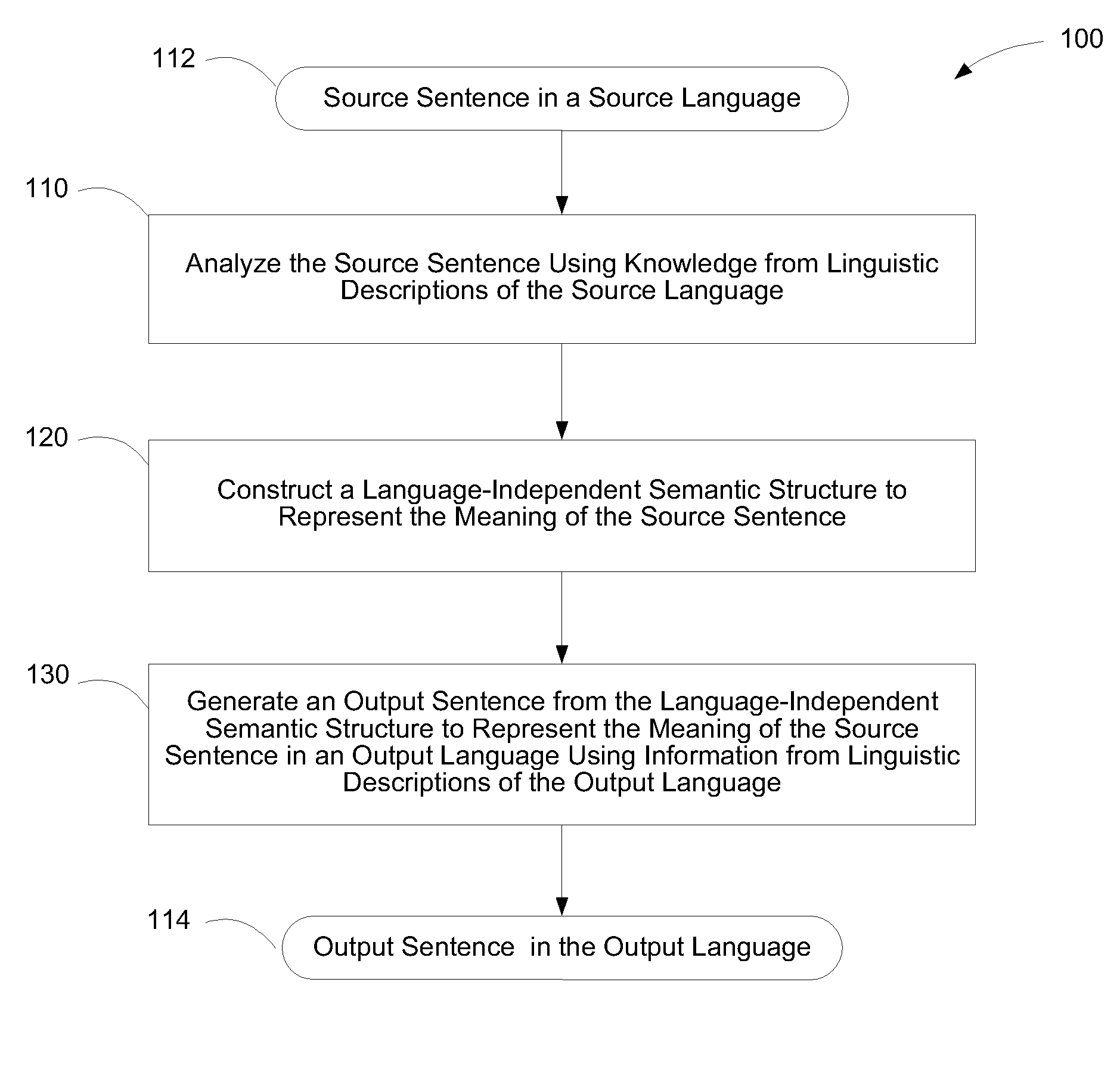Method and system for translating sentences between languages
- Summary
- Abstract
- Description
- Claims
- Application Information
AI Technical Summary
Benefits of technology
Problems solved by technology
Method used
Image
Examples
Embodiment Construction
[0054]Embodiments of the invention provide methods, computer-readable media, and computer systems configured to efficiently and completely translate a source sentence in an input language into an output language using language-independent, universal semantic concepts and structures. The surface syntactical structures and language-independent semantic structures as described herein are very useful for translating sentences between languages. Exhaustive linguistic descriptions are used to analyze a sentence and generate language-independent semantic structures for a source sentence. Problems of syntactical and semantic ambiguities which may appear during the process of transition and translation can be reliably handled.
[0055]The language-independent semantic structures are generated for the source sentence in an input language and are transformed into surface syntactic structures in an output language to generate an output sentence in the output language. The input and output language...
PUM
 Login to View More
Login to View More Abstract
Description
Claims
Application Information
 Login to View More
Login to View More - R&D
- Intellectual Property
- Life Sciences
- Materials
- Tech Scout
- Unparalleled Data Quality
- Higher Quality Content
- 60% Fewer Hallucinations
Browse by: Latest US Patents, China's latest patents, Technical Efficacy Thesaurus, Application Domain, Technology Topic, Popular Technical Reports.
© 2025 PatSnap. All rights reserved.Legal|Privacy policy|Modern Slavery Act Transparency Statement|Sitemap|About US| Contact US: help@patsnap.com



